Quality. We love this word so much we made it one of
our values.
Quality drives and
underpins everything we put the Red Mirror name to, and it’s something we don’t
compromise on. Whatever the organisation, whatever the project, whatever the
budget: Red Mirror clients can rest assured that their eLearning packages will
be top-notch. And that’s not just our ego talking. It’s a claim that’s backed
up by our QA and QC procedures, which ensure that any content that passes
through the well-oiled Red Mirror machine gets scrutinised to within an inch of
its life.

[Thanks, Urban Dictionary]
More about the
intricacies of our way of doing things later. Firstly, let’s clear up the
meaning of the overused – and often misconstrued – acronyms that just got
dropped in (as they so often do) above…
QA (Quality Assurance) refers to preventative action which
aims to ensure that everything is in place for the final product to end up as
perfect as possible. It includes the standardised systems and procedures an
organisation upholds to prevent defects arising.
Picture your
favourite restaurant. The one which does your dream dish, exactly as you like
it. Every. Single. Time. Consider the systems in place to make this happen: the
timely purchasing of ingredients from reputable sources, the maintenance and
upkeep of the kitchen, the regularly updated health and safety certification, the
monitoring of portion sizes, the ongoing training and development, the expectations
of staff performance… This is QA. It incorporates all the measures taken to
achieve consistency, and is a reflection the ongoing strive for output at the
highest level.
QC (Quality Control) is more concerned with the product
itself (as opposed to the processes behind its creation). After all, even the
best laid QA plans can go awry. In recognition of that, it’s necessary to make
sure that shortcomings that have made an appearance, or errors that slipped
through the net, get picked up. Whereas QA is the preventative action of all
involved, QC is usually the reactive responsibility of a select person or team.
Now, going back to
our restaurant analogy, imagine your horror at being presented with a below-par
version of your go-to meal. Perhaps the chef was having an off-day. Maybe the
delivery guy overslept and a subtle-yet-key ingredient was missing. Or the kitchen
hand mistook salt for sugar. You get the point. Without regular taste slurps to
check it (remember: never trust a skinny chef), your dream dish has the
potential to turn into an unprecedented nightmare. Yet fortunately, before it’s
got to that stage, the substandard grub has been binned and remastered from
scratch. It’s carrying out these all-important QC checks that fulfil
expectations and keep clients coming back for more.
It’s not surprising
the terms get confused. The distinction between QA and QC isn’t always clear
cut. In some ways, they are inextricably linked. For instance, incremental
product reviews conducted as part of the overarching QA process invariably
include an element of product-checking – a.k.a QC.

So, let’s talk Red
Mirror. And who better to do that than our very own project management
extraordinaire, Sophia. Let the grilling begin.
Sophia, tell us about Quality Assurance, Red
Mirror-style.
Quality Assurance is one of those things
that often doesn’t get the attention it deserves. But, as a small company with
a big reputation for quality to uphold, it is in fact one of the most critical
parts of our project process.
We’ve always felt that the key to ingraining
a culture of quality is in consistent development; mistakes are always going to
worm their way into projects now and again, but it’s our response to them that really
matters. Anything we pick up on in one project is then taken forward to the
next. That’s how we build effective systems and processes, and tweak them to
fit real-time problems. We’re also quite often guided externally. Our clients
know their content better than anyone else, and we’re more than open to learning
from their treatment of it. Some clients are able to introduce us to a
completely new perspective on what we produce (those are our favourite ones!).
We’re incredibly lucky in that we’re
supported by a really diverse bank of skills. Everyone on the team has some
incredible experience and knowledge to bring to the table, and we’re always
looking to advance that knowledge through developmental opportunities
(workshops, webinars, conferences, etc).
Each of us has a responsibility to keep an
eye out for the finer details, and to flag bits that might feel a little bit
off. As a team, it’s essential that we support one another constructively, and
multiple internal peer reviews are part-and-parcel of everything we produce.

And how do you convey all this to the
client?
It’s imperative our clients are confident that
we’ve got everything in hand. For that reason, we discuss our QA processes and
the measures that we implement in each and every project.
At
kick-off, clients
will find a number of documents landing in their inbox which aim to drill down
to the finer details. We do all we can to collect and collate all the right
bits and pieces from day one to make sure what we produce fits neatly with our
clients’ expectations.
Progress
reports are sent
out each week with timely project updates, We outline how things are coming
along through each of our internal disciplines. Issues and risks are also highlighted
here for early attention.
Communication is where we excel. We’re very
good at understanding how each role and stage within a project gels together, and
we’re really on the case when it comes to conveying this successfully and
addressing any concerns so things flow as smoothly as possible.
And what about Quality Control?
If we’ve done everything we’ve set out to do
from the beginning of the project, we should then have a product that:
- Meets client objectives
- Adheres to pre-defined requirements
- Passes internal review.
However, as anyone who’s ever worked on any
type of creative project would attest to, being so close to something means
that sometimes you struggle to see the wood for the trees.
So, in addition to the peer reviews we run
ourselves, we invite fresh pairs of eyes to come in and comb through the finer
details. Our external QC specialists run checks on three very particular aspects
of the project.
First up, it’s learning design. All storyboards are expertly vetted from an LD
perspective to ensure the most appropriate interaction types have been included
and there’s an appropriate ratio of text-based elements to interactions. UX is
absolutely key and we get rid of anything that doesn’t have high pedagogical
value. Overall coherence and internal cohesion are also key considerations.
Additionally, our content reviewer will take the meat of the project (the text,
images and other content parts), and put it through its paces. They’ll check
for the minor details like typos, as well as anything more glaring that might
have been missed, such as an image with questionable relevance.
The focus during functionality review is on making sure that everything works as it
should – that navigation is perfect; that any interactions are spot-on; and
that the experience overall is enjoyable and engaging. Functionality reviews
are performed by experts in the gaming industry.
And
what if any issues are picked up?
We fix them – immediately! Finding a blip is
a bit like finding a spider in the corner of your room. You don’t even think
about it until it’s been spotted, but – even after it’s gone – it’s hard to
forget it was there! That’s why we do all we can to stop spiders appearing in
the first place, but if they do, our secondary goal is to protect our clients
from a sighting…

Quality Control is the final frontier to
prevent problems emerging from the Red Mirror realm. Once we’re satisfied we’ve
stomped on any the bugs (disclaimer: in real life we are spider-in-a-glass
releasers), we confidently hand over to the client for their own review cycle.

